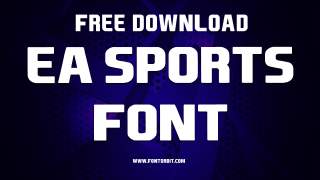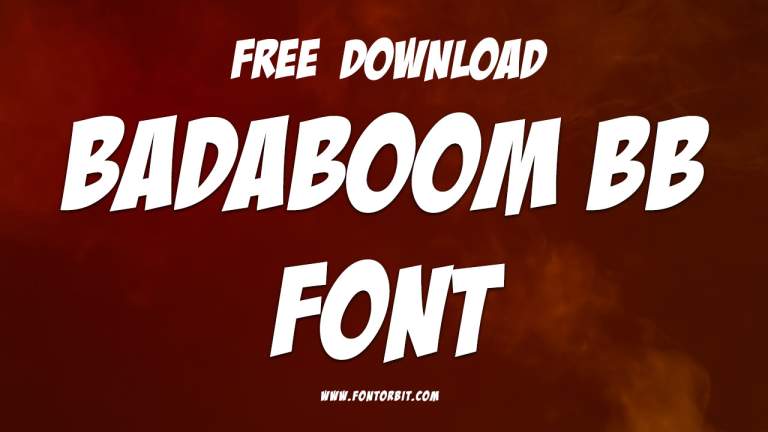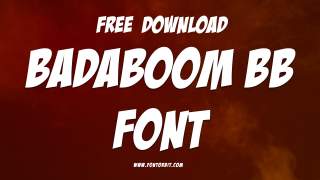Volvo Font: Essential Guide to Timeless Design
The Volvo font, known for its clean, modern, and bold aesthetic, is a cornerstone of the automotive brand’s strong visual identity. Essential for designers and marketers seeking to evoke sophistication and reliability, understanding this typeface is key to leveraging its timeless appeal in branding and design projects. Let’s dive in!
Volvo Font: An Essential Guide to Timeless Design
Ever noticed how some brand logos just feel right? They’re instantly recognizable and exude a certain quality. The Volvo logo is one of them. Its distinctive font plays a huge role in that feeling. Many wonder, “What font does Volvo use?” or “How can I use a font like Volvo’s in my own designs?” It’s a common question for anyone looking to create a brand that feels established, elegant, and trustworthy. If you’ve been struggling to pinpoint that perfect, timeless typeface for your projects, you’re in the right place. We’ll break down the Volvo font family, its characteristics, and how you can find similar styles to make your designs shine.
Unpacking the Volvo Font: More Than Just Letters
When we talk about the “Volvo font,” we’re generally referring to a typeface that embodies the brand’s core values: safety, quality, and modern Scandinavian design. Volvo has a history of using typefaces that are sans-serif, meaning they lack the little decorative strokes (serifs) at the ends of letters. This style often conveys a sense of modernity, clarity, and straightforwardness.
The Volvo logo itself features a robust, clear sans-serif font. For years, the brand has evolved its typography, but the essence of its letterforms has remained consistent. This consistency is crucial for building a strong, recognizable brand identity that resonates across different platforms and products.
The Evolution of Volvo’s Typography
Like many long-standing brands, Volvo’s visual identity has seen subtle shifts over time. While the iconic iron mark (the circular symbol with an arrow) has remained a constant, the wordmark “VOLVO” has been rendered in various iterations of sans-serif typefaces. These changes are often driven by the need for:
- Improved readability on various media, from car badges to websites.
- Alignment with contemporary design trends while maintaining brand heritage.
- Digital adaptation for screens and apps.
The core of Volvo’s typographic approach has always leaned towards fonts that are:
- Geometric and Clean: Often featuring consistent stroke weights and clear, simple letterforms.
- Strong and Stable: Conveying a sense of reliability and security.
- Humanist or Grotesque Sans-Serifs: Balancing functional clarity with a touch of warmth or personality.
Identifying the Core Characteristics of the Volvo Font Style
To truly understand what makes the Volvo font style so effective, let’s break down its key visual elements. These are the characteristics you’ll want to look for when seeking similar typefaces for your own branding.
1. Sans-Serif Structure
The most defining feature is its sans-serif nature. This means you won’t find serifs on the letters. This lends itself to a clean, uncluttered look that’s easy to read, especially at a distance or in small sizes.
2. Open Counterforms
Look at the ‘O’ or ‘A’. The inner spaces (counters) are typically quite open. This improves legibility by ensuring the shapes of the letters are distinct and don’t blend together, even in rapid scanning. This is a crucial element for readability in branding.
3. Generous X-Height
The x-height refers to the height of lowercase letters like ‘x,’ relative to capital letters. Volvo’s preferred styles often have a relatively large x-height compared to the ascenders (parts of letters that extend upwards, like in ‘h’ or ‘l’) and descenders (parts that extend downwards, like in ‘p’ or ‘y’). A larger x-height makes text appear bigger and usually more readable, particularly in headings and shorter texts.
4. Balanced Stroke Contrast
While many sans-serifs have uniform stroke widths, some styles used by Volvo exhibit a subtle variation. This isn’t dramatic contrast like in serif fonts, but a gentle modulation that can add a touch of character and sophistication without sacrificing legibility.
5. Sense of Weight and Stability
The letterforms often feel substantial. They have a grounded presence, conveying a feeling of strength and reliability, which aligns perfectly with Volvo’s reputation for safety and durability.
The Official Volvo Font: A Closer Look
Over the years, Volvo has utilized typefaces that align with their brand identity. While they may not publicly and exclusively endorse one single font for all applications, certain type families have been closely associated with Volvo’s branding, particularly for their wordmark and advertising.
One font that has been very prominent and closely resembles the current Volvo wordmark is Medel Sans. Medel Sans itself is described as a geometric sans-serif with excellent legibility across various applications. It’s designed for clarity, modern appeal, and a touch of elegance, making it an ideal fit for a global automotive brand.
The characteristics that make Medel Sans a strong candidate for Volvo’s typography include:
- Clean, simple letterforms: Designed for maximum readability.
- Balanced proportions: Ensuring visual harmony.
- Versatile weights: Available in a range of weights to suit headlines, body text, and display use.
While Medel Sans is a strong contender and visually aligns with the Volvo wordmark, it’s important to note that major brands often commission custom typefaces or use expertly modified versions of existing fonts to ensure complete control over their brand expression. However, for designers looking to capture that Volvo essence, Medel Sans is an excellent starting point.
Finding Fonts That Capture the Volvo Aesthetic
You don’t need to use an exact replica to get the Volvo font’s feel. Many excellent fonts share its core characteristics. Here’s how to find them and what to look for:
Key Search Terms for Similar Fonts
When browsing font libraries like Google Fonts, Adobe Fonts, or commercial sites, use terms like:
- Geometric Sans-Serif
- Modern Sans-Serif
- Clean Sans-Serif
- Legible Sans-Serif
- Grotesque Sans-Serif (for a slightly more classic, robust feel)
- Humanist Sans-Serif (for a touch more warmth)
Recommended Fonts with a Volvo-esque Feel
Here are a few fonts that embody the clean, modern, and reliable spirit of the Volvo font style:
| Font Name | Key Similarities to Volvo Font | Where to Find It |
|---|---|---|
| Medel Sans | Geometric, clean, excellent legibility, open counters. Very close visual match for Volvo’s wordmark. | Commercial License (e.g., MyFonts, Fontspring) |
| Montserrat | Geometric, modern, high x-height, friendly yet strong. Widely available and versatile. | Google Fonts (Free) |
| Poppins | Geometric, clean, excellent readability, rounded forms add a touch of softness. | Google Fonts (Free) |
| Open Sans | Humanist sans-serif, highly legible, neutral and friendly, works well for body text. | Google Fonts (Free) |
| Nunito / Nunito Sans | Rounded terminals give a very friendly and approachable feel while maintaining a clean sans-serif structure. | Google Fonts (Free) |
| Avenir Next | Geometric, clean, sophisticated, wide range of weights. Often seen in premium branding. | Adobe Fonts (Subscription), Commercial License |
| Proxima Nova | A popular choice blending geometric and grotesque traits. Excellent readability and modern feel. | Commercial License (e.g., MyFonts) |
When choosing, consider the specific weights you need. A bold weight will give you that strong, stable Volvo feel for headlines, while lighter weights can be used for subtler accents or body copy.
Applying the Volvo Font Style in Your Designs
Now that you understand the characteristics and have some font options, how do you use this style effectively? The key is to maintain the principles Volvo employs: clarity, strength, and sophistication.
1. Logo Design
For a logo, opt for a strong, medium to bold weight of a clean sans-serif font. Ensure ample spacing between letters (kerning) for a polished look. Avoid overly decorative or thin fonts that can detract from the feeling of stability.
2. Website and Digital Design
Headlines: Use fonts like Montserrat, Poppins, or Medel Sans in bolder weights for impactful headlines. Pay attention to line height and spacing for optimal readability on screen.
Body Text: For longer passages, consider slightly more humanist sans-serifs like Open Sans or Nunito Sans. These offer excellent legibility over extended reading periods. Ensure a good contrast between the text and background colors.
Navigation and UI Elements: Clean, legible sans-serifs are paramount here. The goal is for users to find information easily without visual distraction. The Volvo font style excels in this application.
3. Print Materials
For brochures, business cards, or signage, the same principles apply. A bold sans-serif for key information and a highly readable sans-serif for details will ensure your brand message is clear and professional. The generous x-height of fonts like Montserrat is particularly beneficial for print readability.
Best Practices for Using Clean Sans-Serifs
Embracing the Volvo font aesthetic means adhering to best practices for typography:
- Hierarchy is Key: Use different weights and sizes from your chosen font family to guide the reader’s eye. Bold for emphasis, regular for core content.
- Mind the Spacing: Proper kerning (space between letters) and leading (space between lines) are crucial for both legibility and a premium feel.
- Less is Often More: Stick to one or two font families that complement each other. A clean sans-serif for headlines paired with a slightly different, but still clean, sans-serif for body text can work well.
- Context Matters: Always consider where your design will be seen. A font that looks great on a screen might need adjustment for print, and vice-versa.
- Accessibility: Ensure sufficient color contrast and legible font choices, especially for body text. Resources like the Web Content Accessibility Guidelines (WCAG) offer great insights.
A Table of Font Pairing Suggestions
To further illustrate how to integrate this style, here’s a look at potential pairings. The goal is often to pair a bolder “Volvo-esque” display font with a more utilitarian, highly readable font for secondary text.
| Primary Font (e.g., for Headlines/Logo feel) | Secondary Font (e.g., for Body Text) | Why it Works | Brand Vibe |
|---|---|---|---|
| Medel Sans Bold / Montserrat Bold | Open Sans Regular | Strong geometric for impact, clear humanist for readability. | Modern, Reliable, Accessible |
| Poppins Semibold | Nunito Sans Regular | Geometric with rounded edges for approachability, soft sans for comfort. | Friendly, Contemporary, Safe |
| Avenir Next Demi | Roboto Regular | Sophisticated geometric for headlines, highly functional and versatile for text. | Premium, Clean, Efficient |
| Proxima Nova Bold | Lato Regular | Solid, modern sans for presence, another well-loved legible sans for continuity. | Strong, Trustworthy, Sleek |
The Enduring Appeal of Timeless Design
Volvo’s choice of typography is more than just selecting letters; it’s a strategic decision that reinforces their brand promise. The clarity, strength, and modern sensibility of their chosen fonts contribute significantly to their image of safety, quality, and sophisticated Scandinavian design.
By understanding the core principles behind the Volvo font style – clean sans-serif structure, excellent legibility, and a sense of stability – you can effectively apply these elements to your own designs. Whether you’re crafting a new logo, designing a website, or laying out marketing materials, aiming for a similar aesthetic can imbue your brand with a sense of timelessness and professionalism that truly resonates with your audience.
Remember, effective typography is about more than just looking good; it’s about communicating clearly and building trust. By choosing wisely and applying these principles, you can create designs that are not only beautiful but also enduring.
Frequently Asked Questions
What font does the Volvo logo use?
While Volvo has subtly updated its typography over time, the wordmark closely resembles modern geometric sans-serif fonts with excellent legibility and clean letterforms. Medel Sans is often cited as being very similar to or directly used for the Volvo wordmark.
Is the Volvo font free to use?
Fonts like Medel Sans are typically available under commercial licenses. However, many free alternatives that capture the Volvo font’s aesthetic, such as Montserrat and Poppins, are available on platforms like Google Fonts.
How do I make a font look “timeless”?
Timeless fonts often share characteristics like clean lines, balanced proportions, good readability, and a lack of trendy ornamentation. Sans-serif fonts from the geometric, grotesque, or humanist categories, especially those with broad x-heights and clear shapes, tend to age well.
What makes a font “modern”?
Modern fonts often feature geometric shapes, clean lines, consistent stroke weights, and an overall minimalist aesthetic. Sans-serif styles are commonly associated with modern design, conveying efficiency and simplicity.
Can I use any sans-serif font for my brand?
While there are many great sans-serif fonts, choose one that aligns with your brand’s personality and message. Consider factors like readability, available weights, and uniqueness. A font that feels too generic might not help your brand stand out.
What is a “geometric sans-serif” font?
Geometric sans-serifs are based on simple geometric shapes like circles and squares. Examples include Futura and Montserrat. They often have a clean, modern, and sometimes slightly rigid feel, which can be excellent for logos and headlines.
Why is legibility important for branding?
Legibility ensures that your message is easily understood. In branding, clear communication builds trust and makes your brand accessible. A font that is hard to read can frustrate potential customers and negatively impact their perception of your brand’s quality.
Conclusion
Exploring the world of typography, especially understanding the deliberate choices behind iconic brands like Volvo, opens up a universe of design possibilities. The “Volvo font” style, characterized by its clean, modern, and robust sans-serif nature, offers a blueprint for creating designs that convey reliability, sophistication, and timeless appeal. By identifying its key features—like open counterforms, generous x-height, and balanced strokes—and exploring similar typefaces such as Medel Sans, Montserrat, or Poppins, you equip yourself to make informed font choices.
Whether your goal is to design a strong logo, a user-friendly website, or impactful marketing collateral, the principles guiding Volvo’s typographic identity can serve as your compass. Prioritize clarity, consider the overall brand message, and always strive for excellent readability. Remember, the font you choose is a powerful tool in your brand’s visual storytelling. By applying thoughtful typographic strategies, you can create design work that not only looks professional but also resonates with enduring quality and style, just like the vehicles that bear the celebrated Volvo name.








Leave a Comment